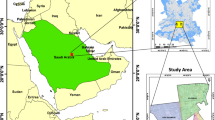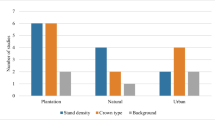Abstract
Expert Systems constitute a part of the broader field of Artificial Intelligence. There are applications which aim in the encasement of knowledge of an expert, in a certain area of science, in a computer application. Thus it is possible for the further use of the experts’ knowledge even by people who cannot directly communicate with an expert. In the field of environmental sciences expert systems were created for dealing with various problems. The purpose of this paper is the development of an expert system which would be able to identify wood produced by Greek forest species. The system will be available for wood industry professionals, for students as a support tool in the education process, and for anyone interested in wood identification.




Similar content being viewed by others
References
Despres S, Rosenthal-Sabroux C (1992) Designing decision support systems and expert systems with a better end-use involvement: a promising approach. Eur J Oper Res 61:145–153
Duchessi P, O’Keefe RM (1992) Contrasting successful and unsuccessful expert systems. Eur J Oper Res 61:122–134
Durkin J (1993) Expert systems: catalog of applications. Intelligent Computer Systems, Inc., Akron, OH
Edwards JS (1992) Expert systems in management and administration—are they really different from decision support systems. Eur J Oper Res 61:114–121
Ellis EA, Bentrup G, Schoeneberger MM (2004) Computer-based tools for decision support in agroforestry: current state and future needs. Agrofor Syst 61:401–421
Hoadley RB (1990) Identifying wood: accurate results with simple tools. Taunton Press, Newtown, CT. ISBN 0-942391-04-7
Hoadley RB (2000) Understanding wood: a craftsman’s guide to wood technology. Taunton Press, Newtown, CT. ISBN 1-56158-358-8
Hoffman K, Kruger L (2004) Microsoft Visual C#.NET 2003 Unleashed. Sams Publishing
Iliadis L (2007) Intelligent informations systems and applications in risk assessment. Stamoulis, Thessaloniki
Jackson P (1990) Introduction to expert systems. Addison-Wesley Publishers, Reading, Massachusetts
Kandel A (1992) Fuzzy expert systems. Florida, CRC Press, USA
Kersten G, Meister D (1995) DSSfESD hardware and software catalogue. IDRC Report, Ottawa
Leondes C (1998) Fuzzy logic and expert systems applications. Academic Press, California
Leyva Lopez JC, Dautt Sanchez L, Aguilera Contreras MA (2008) A multicriteria decision support system with an evolutionary algorithm for deriving final ranking from a fuzzy outranking relation. Oper Res Int J 8:47–62
Marcot BG, McNay RS, Page RE (1988) Use of microcomputers for planning and managing silviculture habitat relationships. USDA General Technical Report PNW-GTR-228
Mikcovski SB, Van Beek LPH (2006) A decision support system for the evaluation of eco-engineering strategies for slope protection. Geotech Geol Eng 24:483–498
Mills WL Jr (1987) Expert systems: applications in the forest products industry. For Prod J 37(9):40–44
Parsaye K, Chignell M (1988) Expert systems for experts. Wiley, New York
Partridge D, Hussain K (1995) Knowledge based information systems. McGraw Hill, New York
Reynolds KM, Schmoldt DL (2006) Computer-aided decision making. In: Shao G, Reynolds KM (eds) Computer applications in sustainable forest management: Including perspectives on collaboration and integration. Springer, The Netherlands, pp 143–169
Schuster EG, Leefers LA, Thompson JE (1993) A Guide to Computer-Based Analytical Tools for implementing National Forest Plans. Gen. Tech. Rep. INT-296, U.S. Department of Agriculture, Forest Service
Seagle JP, Duchessi P (1995) Acquiring expert rules with the aid of decision tables. Eur J Oper Res 84:150–162
Tsoumis G (1991) Science and technology of wood: Structure, properties, utilization. Chapman and Hall, New York
Valarakos AG, Vouros G, Spyropoulos CD (2005) Machine learning-based maintenance of domain-specific application ontologies (to appear in Ontologies in the context of information systems). In: Kishore R, Ramesh R, Sharman R (eds) Ontologies: a handbook of principles, concepts and applications in information systems. Springer, US
Vlaxavas I, Kefalas P, Vasileiadis N, Kokkoras F, Sakelariou I (2006) Artificial intelligence. Giourdas Publications, Thess/niki
Voulgaridis E, Passialis C, Vasiliou V (2000) Wood identification, (Academic lectures). Aristotelian University of Thessaloniki, Greece
Waterman DA (1986) A guide to expert systems. Addison-Wesley Publishers, Reading, Massachusetts
Author information
Authors and Affiliations
Corresponding author
Rights and permissions
About this article
Cite this article
Ioannou, K., Birbilis, D. & Lefakis, P. A pilot prototype decision support system for recognition of Greek forest species. Oper Res Int J 9, 141–152 (2009). https://doi.org/10.1007/s12351-009-0037-7
Received:
Revised:
Accepted:
Published:
Issue Date:
DOI: https://doi.org/10.1007/s12351-009-0037-7




